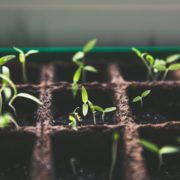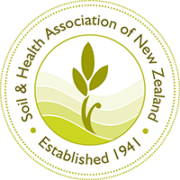The wellbeing of food in Aotearoa
We produce enough food in New Zealand to feed 40 million people, yet one in five Kiwi kids live in households that experience food insecurity.
Gareth Hughes talks about his new role as lead of the Wellbeing Economy Alliance Aotearoa.
We hope you enjoy this free article from OrganicNZ. Join us for access to exclusive members-only content.
How do you get a cabbage? My book, A Gentle Radical: The life of Jeanette Fitzsimons, was recently published, and in researching the biography I stumbled upon an unusual speech the late Green Party politician had given at the Fourth New Zealand Energy Conference entitled “Two Ways to Get a Cabbage”. What on earth did cabbages have to do with a late 1970s energy conference? Fortunately, I was able to track down a faded typewriter-written copy of her speech where Jeanette used the vegetable as an example of the very different approaches society takes to provide things like cabbages.
The mainstream approach, even back then, was energy intensive, relying on artificial fertilisers, chemical pesticides, insecticides and fungicides, and complicated fossil fuel-dependent transport and retail chains. The embedded energy and resources that went into growing a commercial cabbage was huge, and if it wasn’t the uniform size, shape or appearance it would be thrown out rather than sold at the market. She contrasted that cabbage with the home-grown organic variety planted and tended with no need for machinery and pesticides, saying “It represents time, effort, caring and an exchange with the earth.” The home-grown cabbage was fresher, tastier and more nutritious but she pointed out that only the commercial cabbage was represented in official economic statistics of progress.

Reader support keeps us going
Please support our work by joining with a membership subscription (print or digital). Organic NZ is independently published by the Soil & Health Association, a charity devoted to healthy soil, healthy food and healthy people.
Our independent journalism relies on support from people like you!
What does our food really cost us?
We’ve never had more volume of food produced globally than now but our connection to that food is at its lowest point in history. Are we looking at the bigger picture when we buy a cabbage or any item in our modern food system? The current paradigm is dominated by corporate giants, global trade networks and is dependent on huge inputs of energy and chemicals. While we might complain about the high cost of food in the supermarket as inflation rates rise, the really staggering cost is being paid by earth systems – soil, water and atmosphere. How we produce food is a major driver of climate change and biodiversity loss. Every year we draw down further on nature’s balance sheet while too often only valuing the financial one.
Across my 20-year career as a progressive campaigner and Member of Parliament, food has remained as a major theme across all my mahi. I’ve led the engagement work for New Zealand’s food rescue sector, been arrested dressed as Ronald McDonald, which triggered the fast-food giant to ditch GE-fed chicken, protested palm oil ships and Fonterra’s gigantic use of coal, passed the Country of Origin of Food Act so Kiwis can know where their food has come from, and for our moana achieved a ban on shark finning and negotiated in government for cameras on fishing boats. Food touches every part of our lives, society and economy – how it’s grown, how it’s sold and who gets it.
I’ve recently started working for the Wellbeing Economy Alliance, a global collaboration of organisations, individuals and governments to transform the economic system into one that prioritises shared well-being for people and the planet, as the Aotearoa country lead. A wellbeing economy would deliver purpose, nature, fairness and participation – what would that look like for food in New Zealand?
Right now we have an unhealthy relationship with food. We export a volume of food that’s estimated to feed up to 40 million people yet one in five Kiwi kids live in households that experience food insecurity. There’s real hunger and malnutrition in New Zealand. Despite the cost of food – highlighted recently by the Commerce Commission’s staggering estimate that $1 million dollars a day in excess profit is being taken from consumers by the supermarket duopoly – on average, each New Zealand household throws out an estimated $1520 worth of food every year. Collectively, that’s more than $3 billion worth of good food rotting away and contributing to climate change. Agricultural production is responsible for half of New Zealand’s emissions, and dairy’s impact on our rivers and lakes, and nitrate contamination of water supplies are well-known problems. Every year 192 million tonnes of our most precious resource – soil – washes out to sea as a result of our land-use practices. New Zealand still sprays chemicals banned in Europe and uses destructive bottom-trawling fishing techniques, smashing ancient deep sea coral.
Making progress
Despite the gloom, there are bright spots emerging. We see the growth of food cooperatives and farmers’ markets where consumers can have a closer relationship with producers. The organics sector grew 20 percent between 2017 and 2020. Regenerative farming has become a household name, and more farmers are experimenting with reducing stocking rates and finding that their profits are increasing.
Food-rescue organisations report 30 million meals were provided in the last year, turning an environmental problem into a social solution. Pātaka kai (free pantries) are popping up all over Aotearoa to facilitate sharing food. New products are hitting the market, from pea-protein meat alternatives and bread made from crickets to delicious oat milk brands. Growing numbers of New Zealanders are eating more plant-based meals for health, environmental or ethical reasons, and as a nation dependent on food and fibre exports, international consumers’ desires to purchase food with lower climate and higher animal-welfare standards continue to drive change.
It could be said that today’s problems were once yesterday’s solutions. Around the turn of the millennium, farmers were actively encouraged to convert to dairy and expand into regions totally unsuited to hit exponential growth targets. A focus on volume over value has come with real costs. As we deal with today’s problems – dependence on milk powder exports, environmental degradation, the cost of food, genuine food poverty, and reliance on unethical inputs like palm kernel expeller and phosphate from occupied Western Sahara – we need to ensure we aren’t creating tomorrow’s problems.
What would a fair system look like?
A wellbeing economy of food would look at broader outcomes than just growth rates or profit; it would value wider issues as well – resiliency, sustainability, fairness and access.
One positive example of this happening right now is the fact there is such a thing as a free lunch in New Zealand. Currently 220,000 kids are receiving free lunches in low-decile schools. The primary objective was to make sure children going without were fed, but what schools report are additional benefits for students’ health and food awareness. It’s impacting their attendance, ability to learn and participate in class and is building a sense of school community. It’s a solution-multiplier that was avoided for many years just on the question of cost, and is delivering significant benefits. Ideally we will build on the success and ensure the food used is organic, grown locally and that students can connect with growers.
Another example is Wakatū, a company owned by 4000 Māori families in the Nelson region. Wakatū has a 500-year strategy focused on their tikanga, or values, the taonga that is the land and water, and manaakitanga for the people. Kono, their food branch, is one of the region’s largest employers and exports to more than 80 countries.
Imagine if New Zealand and our food system had a 500-year strategy! We have made a start – factoring in well-being in our national budgets, and now we need to do that in all the decisions government and business make. How we grow a cabbage, produce milk or catch a fish matters more than just the quarterly profit and loss statement.
I believe thinking long term and holistically from a wellbeing perspective would encourage regenerative, restorative agriculture and food sovereignty. Tangata whenua would be able to harvest kai from healthy rivers and seas. We’d see more food forests and community gardens. We would eat food in season and we would know its provenance and how it was produced. Food poverty would be consigned to history and nutritious organic food would be available for all – not just those who can afford it. Let’s move from just counting commercial cabbages to valuing everything that matters.
Gareth Hughes is a former Green Party MP and the country lead for the Wellbeing Economy Alliance: weall.org.









